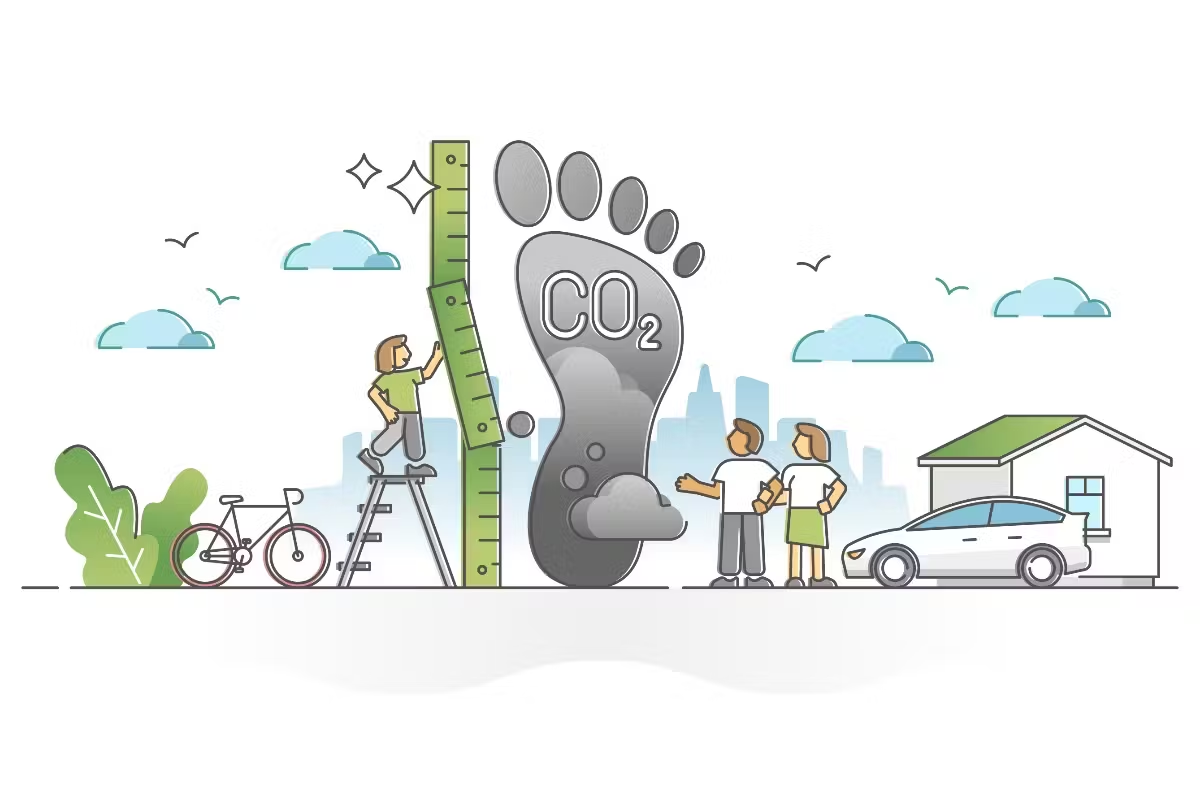
The concept of a carbon footprint has gained significant attention in recent years as the world grapples with the urgent need to address climate change. A carbon footprint refers to the total amount of greenhouse gases, predominantly carbon dioxide (CO2), emitted by individuals, organizations, or activities. It serves as a measure of the impact we have on the environment in terms of our everyday choices and actions.
Understanding the significance of our carbon footprint is crucial for implementing effective strategies to reduce greenhouse gas emissions and mitigate climate change. In this article, we will explore 11 astounding facts about carbon footprints that shed light on the current state of affairs and the importance of taking proactive steps towards a more sustainable future. From the surprising sources of carbon emissions to the potential impact of individual actions, these facts will help us grasp the magnitude of the issue at hand and inspire us to make informed choices for the betterment of our planet.
Key Takeaways:
- Fact 1: Carbon footprint is the total amount of greenhouse gases caused by human activities. It’s like a measure of our impact on the environment.
- Fact 2: Burning fossil fuels is the biggest contributor to carbon emissions. We can make a difference by using renewable energy and reducing energy consumption.
Carbon Footprint Defined
Carbon footprint refers to the total amount of greenhouse gas emissions, specifically carbon dioxide (CO2), caused by an individual, organization, product, or event throughout its lifecycle. It is commonly used as a measure of the impact human activities have on the environment.
The Largest Contributor
The burning of fossil fuels, such as coal, oil, and natural gas, accounts for the majority of carbon emissions worldwide. This includes emissions from transportation, electricity generation, and industrial processes.
Deforestation’s Role
Deforestation significantly contributes to carbon footprint as trees act as carbon sinks, absorbing CO2 from the atmosphere. When trees are cut down or burned, this stored carbon is released back into the air, exacerbating climate change.
Impact of Food Production
The agriculture industry, especially livestock production, is a major contributor to carbon emissions. Methane, a potent greenhouse gas, is released by cattle during digestion and contributes to the carbon footprint of meat and dairy products.
The Influence of Energy Consumption
Reducing energy consumption is crucial in decreasing carbon footprint. Simple acts like switching to energy-efficient appliances, using renewable energy sources, and practicing energy-saving habits can make a significant difference.
Traveling’s Carbon Footprint
Transportation, particularly air travel, creates substantial carbon emissions. Each flight taken contributes to an individual’s carbon footprint. Using alternative modes of transportation or offsetting emissions can help reduce this impact.
The Case for Recycling
Recycling reduces carbon footprint by saving energy on production and reducing waste in landfills. By reusing materials, fewer resources are consumed, leading to lower greenhouse gas emissions.
The Role of Renewable Energy
Investing in renewable energy sources, such as solar and wind power, is vital in reducing carbon emissions. Shifting away from fossil fuels towards sustainable energy can help combat climate change.
Carbon Offsetting
Individuals and organizations can offset their carbon footprint by investing in projects that reduce greenhouse gas emissions, such as reforestation initiatives or renewable energy projects.
The Importance of Sustainable Practices
Adopting sustainable practices in daily life, such as conserving water, reducing waste, and choosing eco-friendly products, can contribute to lowering carbon footprint and preserving the environment.
The Global Impact
Carbon footprint is a global issue, with each person and nation having a responsibility to address it. By raising awareness, implementing sustainable policies, and making eco-conscious choices, we can collectively make a significant impact to combat climate change.
Conclusion
In conclusion, understanding and reducing our carbon footprint is essential for the well-being of our planet. These astounding facts about carbon footprint highlight the significant impact our daily activities have on the environment. By making small changes in our lifestyle choices, we can contribute to a more sustainable future. Whether it’s using renewable energy sources, adopting eco-friendly transportation options, or practicing mindful consumption, every effort counts. With increased awareness and collective action, we can work towards mitigating climate change and preserving the Earth for future generations.
FAQs
1. What is a carbon footprint?
A carbon footprint refers to the total amount of greenhouse gases, primarily carbon dioxide, released into the atmosphere as a result of human activities.
2. How is carbon footprint calculated?
Carbon footprint is calculated by considering various factors such as energy consumption, transportation, waste production, and lifestyle choices. It involves measuring the amount of greenhouse gas emissions associated with these activities.
3. What are the major contributors to carbon footprint?
The major contributors to carbon footprint include burning fossil fuels for energy generation, transportation, industrial processes, deforestation, and agricultural practices.
4. Why is reducing carbon footprint important?
Reducing carbon footprint is important to mitigate climate change, protect the environment, and preserve natural resources. It helps in reducing greenhouse gas emissions and promoting sustainable practices.
5. How can I reduce my carbon footprint?
You can reduce your carbon footprint by using energy-efficient appliances, opting for renewable energy sources, minimizing waste, choosing eco-friendly transportation, practicing sustainable agriculture, and adopting a mindful consumption approach.
Reducing carbon footprint is crucial for a sustainable future. Want to learn more astounding facts about this critical issue? Explore our captivating article delving deeper into carbon footprint's impact. Curious about environmental initiatives in Campbell, California? Check out our piece highlighting their efforts. Interested in the bigger picture of carbon emissions? Read our article uncovering surprising facts about this global concern. Together, we can make a difference by understanding the science and taking action to protect our planet.
Was this page helpful?
Our commitment to delivering trustworthy and engaging content is at the heart of what we do. Each fact on our site is contributed by real users like you, bringing a wealth of diverse insights and information. To ensure the highest standards of accuracy and reliability, our dedicated editors meticulously review each submission. This process guarantees that the facts we share are not only fascinating but also credible. Trust in our commitment to quality and authenticity as you explore and learn with us.


